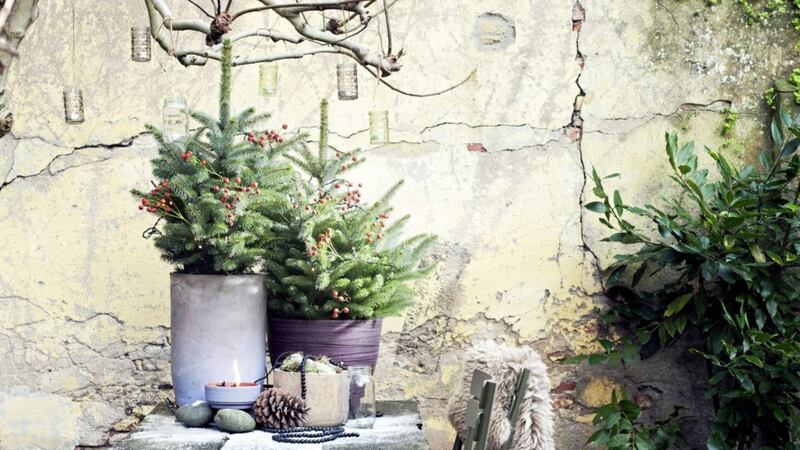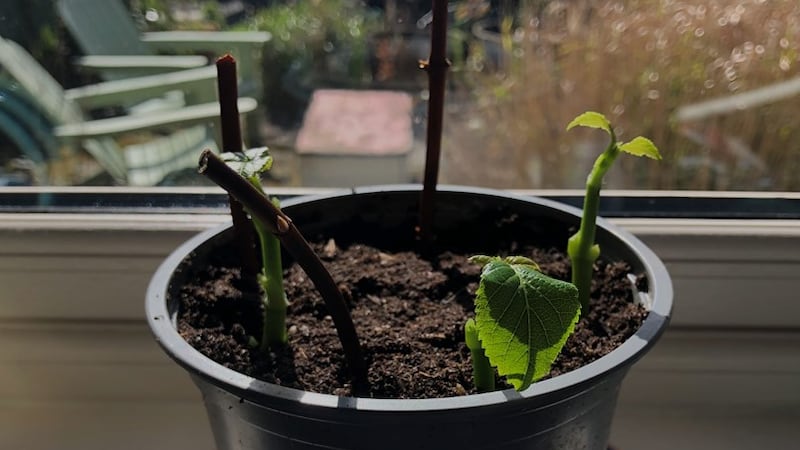THE Norway spruce – Picea abies – is the most popular Christmas tree, prized for its pleasant pine aroma and thick broad needles. Slightly prickly to the touch, it will take pride of place in many a living room over the course of the next month. But the spruce is also a popular evergreen conifer in the garden and a tree that can shape the whole look of the garden combined with other shrubs and conifers.
It doesn’t have to be big, though – the spruce ranges in size from 50cm up to 50m but left unchecked they can become substantial so it’s a good idea to plant a solitary tree which has room to grow. For those that produce cones, these will hang at the ends of the branches.
At Christmas, most suppliers sell it without roots, meaning it needs to be placed on a wooden cross or metal stand. Increasingly, though, we are seeing Christmas trees with rootballs and even miniature spruces with an attractive conical form, such as Picea glauca ‘Conica’.
The decorative value is determined by the arrangement of the branches bearing the needles (actually leaves) and the tree’s shape. By placing your Christmas tree in water, you can help prevent needle shed. If planting outside after Christmas, following a few simple tips will keep your spruce healthy and looking its best. Plant in a damp, moderately nutrient-rich, somewhat acidic soil – the spruce can tolerate both shade and full sun.
Replanting a spruce with roots in the garden requires some care. When buying, check that there is a sufficiently large rootball at the bottom of the tree, and preferably place the tree on a Christmas-tree stand containing water and shrub food.
Because the plants have been standing indoors in the warmth for three weeks or more, the transition outdoors is not always easy. A frost-free period is therefore important in order to allow the plant to root properly in the garden. Caring for miniature Christmas trees in the home is often much easier as long as you water the plant regularly and place it in a light spot. The cooler the spot, the longer the plant will continue to flourish.
With most spruces, particularly the dwarf varieties, there’s no need to prune. If a larger spruce is getting too big or too bare, prune in spring (April and May) ideally. Use ordinary hedge clippers for this and snip a few centimetres off the ends of the branches. This will keep the shape nicely symmetrical and bulk out the spindles.
HEANEY HOMEPLACE TALK
Best-selling author and Independent gardening columnist Anna Pavord will be at the Seamus Heaney HomePlace in Bellaghy later today to talk about her work and its relationship to nature.
From WB Yeats to Patrick Kavanagh, many Irish poets have celebrated the landscape of their youth and, like much of his work, Seamus Heaney’s third collection, Wintering Out, is deeply embedded in place. For this 'in conversation' event, Pavord will explore the many ways in which artists, writers and poets have responded to nature and the rural landscape.
Anna Pavord's book The Tulip was an international bestseller. Her acclaimed new work Landskipping examines the changing ways in which Britain's landscape has been celebrated, managed and described over the centuries.
The event begins at 2pm and tickets cost £5.








